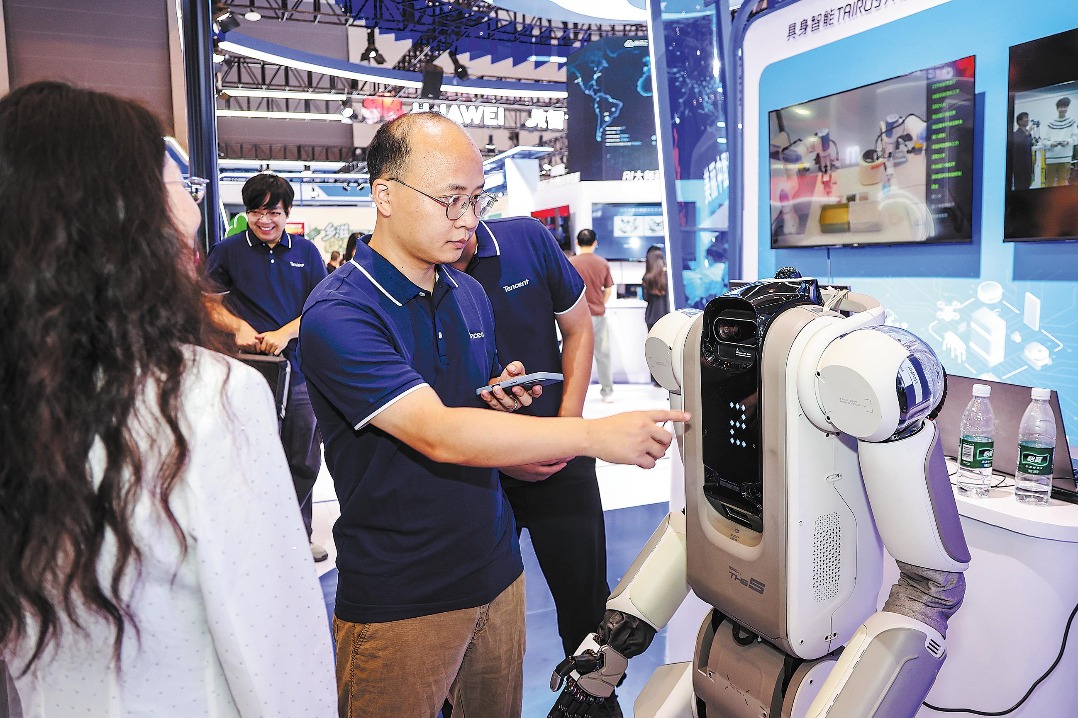High-tech helmet to diagnose aging ailments
Device to detect conditions such as Alzheimer's, Parkinson's, epilepsy

Patients afflicted with Alzheimer's disease, Parkinson's disease and epilepsy may be able to receive a real-time dynamic scanning of their brain by wearing a small-sized all-digital helmet positron emission tomography (PET) scanner, following researchers in China developing the world's first such active monitoring equipment.
The portable hemispheric digital helmet scanners were developed by researchers at Huazhong University of Science and Technology in Wuhan, Hubei province, and are in the process of obtaining registration certificates as medical devices in China.
A patient only needs to sit down while donning the helmets to get imaged — not unlike getting a perm at a beauty shop — and users can pass the approximately 10-minute examination process by playing on their mobile phones if they so choose, the researchers said.
The helmet scanner has been developed by Zhang Min and Zhu Xiaohua, both professors at Tongji Hospital, affiliated with Tongji Medical College of HUST, as well as Nicola D'Ascenzo, a professor at the College of Life Science and Technology of HUST, with two teams of developers launching research and development into the innovative product in 2019, they said.
The brain is composed of billions of neurons and intricate neural networks, and the high complexity of gray matter structure and function has always made it a challenge for medical R&D.
So far, devices that can reflect the anatomical structure of the brain include head computed tomography (CT), magnetic resonance imaging (MRI) and PET scans. Still, head CT and MRI results can only generate images and can't observe the metabolic activity of the brain, which has certain limitations for the research and treatment of major brain diseases.
"The helmet scanner can better adapt to the shape of the head, adjust the angle as needed, improve coverage and produce more effective data. So far, we have completed 100 clinical experiments with the first generation of the device on healthy people, those who have mild cognitive declines and those who have been diagnosed with Alzheimer's disease. The helmet scanner can also help with detecting intracranial tumors and is being used for neuroscience research, as the device can help turn metabolic information into digital information," Zhang said.
Unlike CT machines and MRI scans, which require bulky and immovable devices, and for patients to lie flat and stationary during examinations, the helmet scanner can complete real-time dynamic brain scanning with patients in flexible postures, regardless of locations and proximity limitations.
Researchers said they have been actively optimizing the performance of the helmet scanner to achieve the next step of technological transformation. The scanner can move along with the movement of the head, and realize continuous detection of brain functionality.
"Realizing digitalization at the very first stage of detection is essential for the simple design of the helmet scanner. The device is fully digitalized and the information is presented in a readable format," said Li Bingxuan, an associate researcher at the Institute of Artificial Intelligence of Hefei Comprehensive National Science Center. He has also participated in the R&D of the device.
China is an increasingly aging society with a growing population of seniors. By the end of last year, people aged 60 and above reached 296.97 million, or 21.1 percent of the total population, said the National Bureau of Statistics, and demand for medical devices to help detect related diseases has been growing.
The helmet scanner is expected to provide strong support for early diagnosis, drug efficacy monitoring and new drug development in response to neurodegenerative diseases in an aging society, and it is likely to provide cutting-edge modalities for neuroscience researchers to explore more unknown fields, experts said.



































